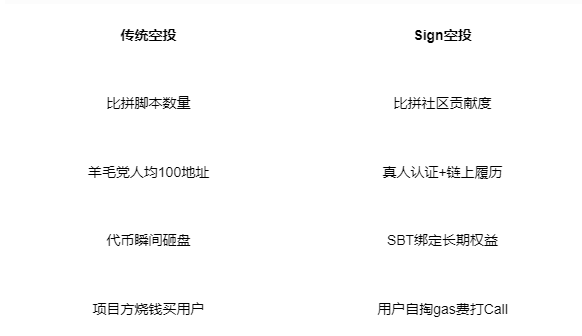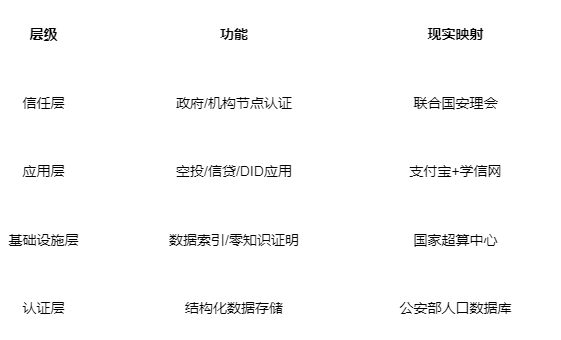Sign is a rapidly rising project in the Web3 field, creating a unique ecosystem through community operation, innovative technology, and collaboration with governments.
Written by: Alvis
"In an industry where harvesting profits is faster than harvesting wheat, a team suddenly emerges that doesn't make empty promises or shout orders, quietly making a fortune while getting community members to tattoo their loyalty—this is more surreal than Elon Musk live-streaming eating Lao Gan Ma."
1. Community Carnival: The Rise of the "Orange Cult" in the Web3 Era
1.1 When "Orange Glasses" Become Cyber Relics

In the brutal arena of cryptocurrency where everyone has a "vision," the Sign community has turned Web3 into a large online carnival. They conquered Twitter with orange glasses memes, created an on-chain imperial examination system using SBT (Soulbound Tokens), and even got the Sierra Leone government to act as a blockchain ID issuer—this operation can be described as "rural encirclement of the city" in the Web3 era.
The so-called "Orange Dynasty" is essentially a carefully designed group hypnosis. They used three clever tactics to get 50,000 users to voluntarily become "water suppliers":
Visual Symbol Diminution: Transforming orange glasses into a cyberpunk version of the "Supreme Box Logo," allowing users to complete the membership ritual by simply changing their Twitter avatar.
SBT Imperial Examination System: Creating titles like Support Warrior and Orange in the Veins, turning cheering into a ranking game.
CEO Persona Collapse Operation: Founder Yan Xin was turned into meme material during an AMA, perfectly replicating the down-to-earth tactics of "Don't run, fellow townsman."
This kind of community building is like recreating "Let the Bullets Fly" on the blockchain—standing firm (not harvesting profits) while still making money (earning $15 million a year). While other projects are still struggling with "how to prevent token crashes," Sign community members have already tattooed the project logo on their arms, turning the consensus mechanism into a cult scene.
1.2 Face-Slapping Economics: Why SBT is the Kryptonite for Profit Harvesters
Traditional airdrops are like a market clearance sale—arbitrageurs create hundreds of accounts to snatch them up, leaving project teams with a bunch of zombie users. But Sign's SBT system directly undermines this play:

The brilliance of this mechanism lies in converting speculative costs into sunk costs. When users create memes for three consecutive months to earn the title of "Outstanding Content Creator," they are essentially building their "Orange Guardian" persona. At this point, if anyone dares to crash the token, the first to jump in anger will be the community members themselves.
2. Product Matrix: The "On-Chain Goldman Sachs" Quietly Making a Fortune
2.1 TokenTable: The Printing Press of the Web3 World
If Uniswap is a decentralized casino, then TokenTable is the Wall Street investment bank of the blockchain era. This platform, which has quietly handled $4 billion in assets, is doing three things that make traditional financial moguls exclaim in admiration:

TokenTable provides standardized infrastructure that solves issues related to token issuance, distribution, and liquidity management. This allows project teams to focus their energy on tokenomics and product development.
① Industrialized Airdrop Production
When the Kaito project needed to distribute tokens to 100,000 users, TokenTable's automated system handled the entire process from eligibility verification to on-chain distribution, achieving efficiency comparable to Foxconn's phone assembly line. Even more impressively, they took on the distribution of Sierra Leone's national digital currency—equivalent to helping African brothers set up a blockchain version of China's mobile payment "Hepay."
② Token Locking Magic
Using smart contracts to lock VC's chips into Russian nesting dolls: 20% unlocked in the first year, with the remaining released linearly over four years. A certain project attempted to modify the unlocking terms but was caught red-handed by TokenTable's automatic auditing system, akin to an on-chain version of "The Wolf of Wall Street."
③ OTC Dark Pool Trading
They created a "locked token futures market," allowing institutional players to trade locked tokens like buying and selling pre-sold properties. Recently, they helped a DeFi project complete a $200 million bulk transaction, with fees higher than those at a Macau casino.
2.2 SignPass: The "Electronic Indulgence" of the Blockchain Era

This digital ID system, developed in collaboration with the Sierra Leone government, essentially issues a "pass" for the 21st century. When you pull out SignPass at Dubai airport, customs can scan it to see on-chain records:
Vaccination proof (signed by WHO nodes)
Asset proof (automatically generated by TokenTable)
Even records of DAO governance contributions
The most powerful aspect of this is that it transforms KYC into KYD (Know Your Data)—government agencies can no longer monopolize citizen data; your on-chain history is the best credit guarantee. No wonder the UAE is issuing ten-year visas to Web3 entrepreneurs; this move has effectively turned blockchain into a "new continent" for digital nomads.
3. Protocol Ambitions: The "Road-Building Movement" of Blockchain Trust Layers
3.1 The Open Conspiracy of Sign Protocol
This underlying protocol is quietly doing something big—moving global trust infrastructure onto the blockchain. Specifically, it aims to rebuild the "Tower of Babel" of digital society through a four-layer architecture:

3.2 The "On-Chain Goldman Sachs" Plan with CZ

The $16 million strategic investment led by Binance reveals Sign's ultimate ambition—to become the SWIFT system of the Web3 world. From the recently released roadmap, three major strategies can be seen:
Digital Fiat Currency Issuance Platform: Currently helping a Southeast Asian country develop a CBDC system, planning to replace SWIFT settlements with blockchain.
AI Agency Economy: Opening on-chain accounts for AI robots, potentially leading to the phenomenon of "AI working to earn gas fees."
Supranational Credit Network: Your Chinese Sesame Credit score can directly be used to apply for a credit card in Dubai, with on-chain credit transcending borders.
Once these plans are realized, Sign will upgrade from a tool provider to a rule-maker in the digital economy. No wonder Sequoia Capital has rarely made a three-region investment; they are clearly betting on the next Visa-level infrastructure.
4. The Dark Side of Prosperity: The Achilles' Heel of the Orange Dynasty
4.1 The "Three Kingdoms Kill" in the DID Track
Although Sign is currently in the lead, there are still strong competitors lurking ahead:
Lens Protocol: The invisible champion in the social graph field.
ENS: The "Blockchain Business Bureau" that has already registered 2 million domain names.
Microsoft / Tencent: Secretly developing a consortium chain version of the DID system.
Even more frightening is the dimensionality reduction attack from traditional internet giants. If WeChat suddenly supports blockchain real-name authentication, Sign's expansion in the Asian market may face a "Berlin Wall."
4.2 The Governance Dilemma of the "Tacitus Trap"
Currently, Sign's governance relies entirely on team authority, and this centralized model is laying mines:
A community vote once raised suspicions of vote manipulation, damaging the "fairness" persona.
The implementation of SignPass in a certain African country has been questioned for involving data monopolization.
The core protocol code has not yet been fully open-sourced.
These issues are like the sword of Damocles, potentially triggering a trust avalanche at any moment. After all, in the Web3 world, the story of the dragon-slaying youth turning into a dragon plays out every day.
5. Revelation: A "Counter-Consensus" Sample of Web3 Entrepreneurship
The story of Sign teaches the industry three "counter-intuitive" lessons:
1. The Reverse Philosophy of Earning Before Financing
While peers are burning money to buy traffic, Sign sustains the entire team with annual revenue from TokenTable, proving that Web3 can be profitable; it's just that most people are too inexperienced.
2. Community Building as "Rural Encirclement of the City"
Without high-profile concept hype, they instead cut in through changing avatars and making memes, turning cold starts into a tropical rainforest ecosystem.
3. Regulatory Cooperation as "If You Can't Beat Them, Join Them"
While others are still engaged in guerrilla warfare with the SEC, Sign is directly helping the government develop blockchain administrative systems, truly mastering the strategy of "using the enemy's skills to defeat the enemy."
In this industry filled with fraud and bubbles, Sign's existence is like a torch in a dark forest—it proves that Web3 can embody both idealistic sentiments and the ability to make money while standing firm. As for how far this orange empire can go, perhaps it is as Yan Xin said in the AMA: "We are transforming blockchain from a technical toy into a social operating system, and the game has just begun."

"When you see more and more people wearing orange glasses on Twitter, don't doubt it—this is the 'V for Vendetta' of the Web3 era, except this revolution doesn't use explosives; it uses smart contracts."
免责声明:本文章仅代表作者个人观点,不代表本平台的立场和观点。本文章仅供信息分享,不构成对任何人的任何投资建议。用户与作者之间的任何争议,与本平台无关。如网页中刊载的文章或图片涉及侵权,请提供相关的权利证明和身份证明发送邮件到support@aicoin.com,本平台相关工作人员将会进行核查。




